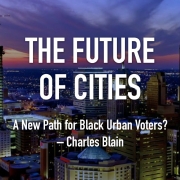Mysteries of the Labor Force
One of the enduring mysteries of contemporary society centers on the seeming disassociation of so much of the labor force from the economy. This became particularly evident during the pandemic, when checks arrived regularly to people who used to work. And even this year, several states, including California, have sent payments to cover inflationary pressures.
Yet even as some employers raise wages and job counts have surged, many workers are still staying on the sidelines. One problem is that inflation has risen faster than incomes, obviating the higher pay. This is occurring when, despite well publicized layoffs in tech and finance, other sectors like retail stores, restaurants, and factories are consistently shortly staffed.
Managers fret about a decline in a “go-getting” attitude, with employees unwilling to work weekends and extra hours. Many also point to habits and attitudes cultivated by the education system, which increasingly de-emphasizes hard work and diligence in favor of indoctrination and “safety,” comments New York University professor Jonathan Haidt. “When you look at Americans born after 1995,” Haidt observes, “what you find is that they have extraordinarily high rates of anxiety, depression, self-harm, suicide, and fragility.”
Many Causes
There are many explanations here, and each, to some extent, makes sense. Alienation of labor, as Marx described it, has risen as people conclude that “grinding” doesn’t pay off. In America, a country where hard work has long been celebrated, barely half of Democratic Party members believe that such efforts offer commensurate rewards. Among some young people around the world—even in China —there is a reluctance to embrace hard work and a desire to “lay flat” as they essentially avoid the congestion and stresses of urban life. There are good reasons to be discouraged. In the United States, long known as the land of opportunity, the chance of middle-class earners moving to the top rungs of the earnings ladder has dropped by approximately 20 percent since the early 1980s.
For many, college education was long seen as the certified path to success. But no longer.
There’s a surplus of college degrees, often devalued by easy grading and a proliferation of trendy “gut” glasses. Half of all BAs work at jobs such as baristas that do not require an expensive four-year degree. The continued decline of unions, particularly in the private sector, has weakened the appeal of employment by stripping away job protections, health, and pension benefits.
Over recent decades, many jobs that could support families have disappeared; according to one UK account, self-employment and gig work generally do not provide sustenance for anything like a middle-class lifestyle. Most new opportunities tend to be low wage service work. Some reluctance may be linked to concerns, not at all unfounded, that many jobs will be eliminated by automation, impacting as many as 90 million American workers.
Men are the worst affected. If we include labor force dropouts, AEI scholar Nick Eberstadt suggests, the unemployment rate for men is at “Depression era” levels, as measured by lack of participation. The number of men earning no income has risen from 6 percent in the mid-sixties to 16 percent today, a phenomenon largely ignored by the mass media.
Indeed, the economic prospects of women, as Brookings Institution economist Richard Reeves notes, have risen at the same time those of men have declined. The gender wage gap, he suggests, has diminished markedly as women ascend to higher skilled, higher paid jobs. In contrast, boys and men, Reeves says, are “left behind,” plagued by psychological disorders, lack of friends, and drug addiction and have been increasingly sidelined from the economy.
Critical global demographic shifts—not only in America—also play a role through declining fertility rates and a shrinking supply of labor, particularly as legal immigration has fallen. The proportion of the U.S. population aged between 16 and 64 grew 21 percent during the eighties; during the 2010s, it grew by less than 5 percent. The EU and East Asia are suffering even stronger declines in their working-age populations and, in Europe at least, working fewer hours in order to keep more people at least partially employed.
Discouraged Workers
The current economic recovery, if that’s what it is, reinforces all these trends. Most of the new jobs created over the past year have been low paid services jobs. This has been the case in recent years—nearly half of all American workers now receive low wages—which may prove a critical untold story behind the current “labor shortage.” The recent impressive job growth numbers were predominately in lower wage service professions, particularly in fields like restaurants and hospitality which suffered most in the pandemic and are now recovering. Almost two-thirds of all new jobs over the last three months were in low-wage services.
Read the rest of this piece at American Mind.
Joel Kotkin is the author of The Coming of Neo-Feudalism: A Warning to the Global Middle Class. He is the Roger Hobbs Presidential Fellow in Urban Futures at Chapman University and Executive Director for Urban Reform Institute. Learn more at joelkotkin.com and follow him on Twitter @joelkotkin.
Photo: Movidagrafica Barcelona via Pexels.





 Gage Skidmore, used under CC 2.0 License
Gage Skidmore, used under CC 2.0 License Steve Jurvetson, used under CC 2.0 License
Steve Jurvetson, used under CC 2.0 License

